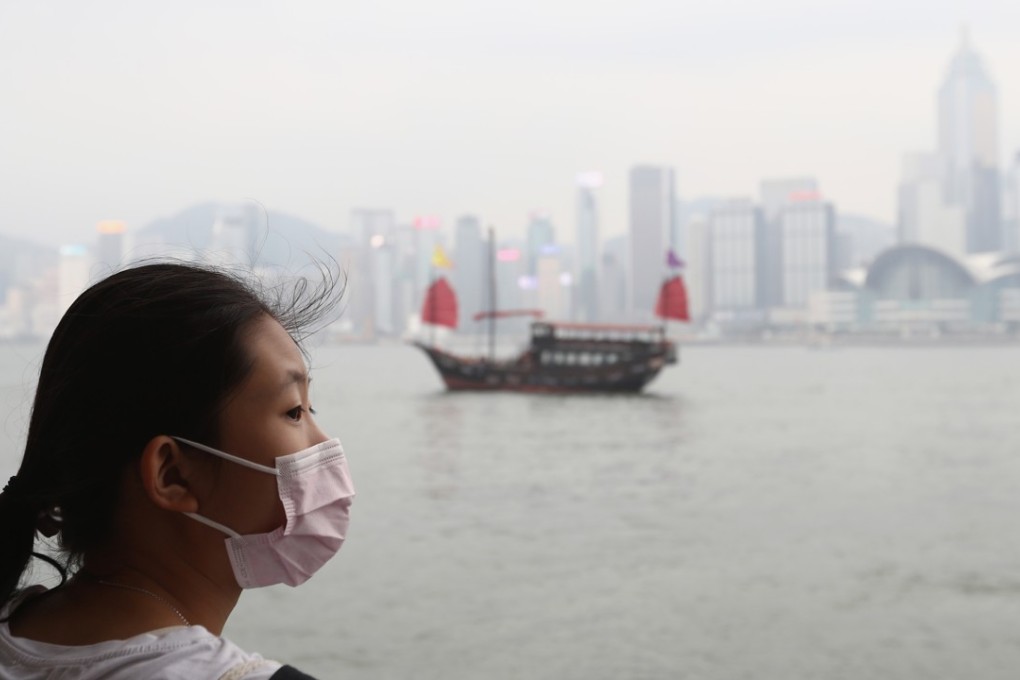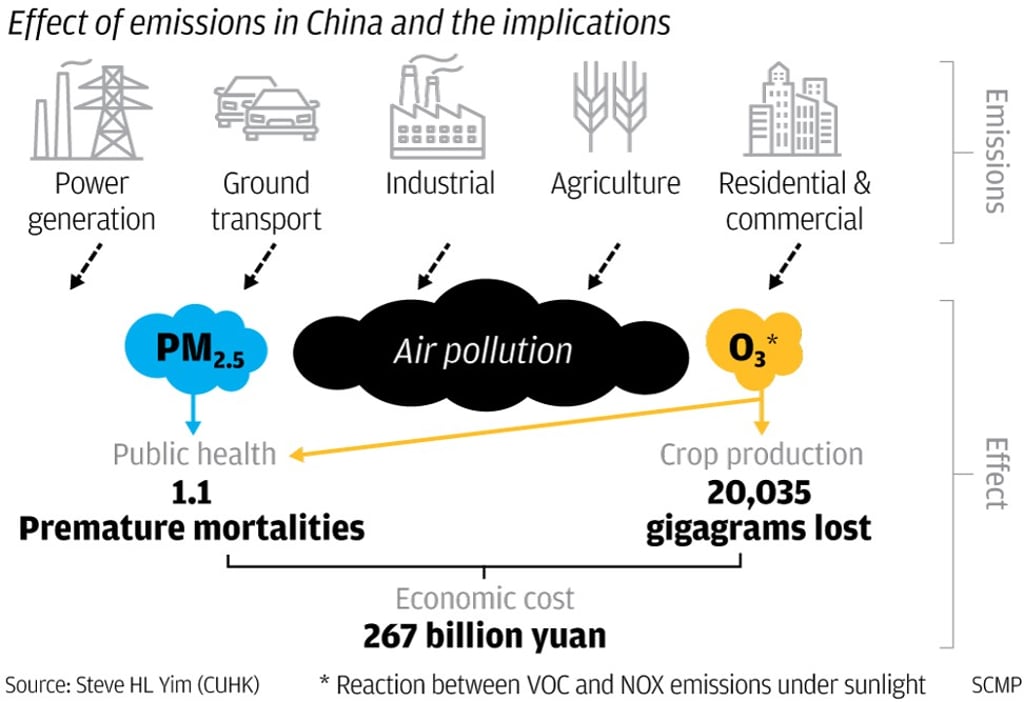Air pollution is killing 1 million people and costing Chinese economy 267 billion yuan a year, research from CUHK shows
Two pollutants were found to cause an average 1.1 million premature deaths in the country each year and are destroying 20 million tonnes of rice, wheat, maize and soybean

Air pollution from smog-inducing ozone and fine particles may be shaving an estimated 267 billion yuan (US$38 billion) off the Chinese economy each year in the form of early deaths and lost food production, a new study has found.
Researchers from the Chinese University of Hong Kong derived the figure by calculating the social costs of air pollution attributed to the impact on public health and reduced crop yields.
“This is a fairly large and significant figure considering that it amounts to about 0.7 per cent of national GDP,” lead investigator Steve Yim Hung-lam, an assistant professor in the geography and resources management department, said.
The report, published in the scientific journal Environmental Research Letters, came as China recently tightened targets for ozone-forming pollutants and fine particles for cities as part of a long-awaited three-year action plan for “winning the war for blue skies” for 2018 to 2020.
Yim’s team analysed 2010 contributions to ground-level ozone (O3) and fine respirable particulate (PM2.5) pollution from six sectors of the economy – industrial, commercial and residential, agriculture, power generation, ground transport and “others”, such as aviation and fires.
